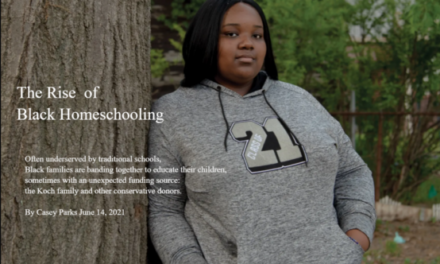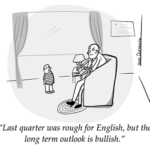It’s not always apparent to non-journalists where reporters get their story ideas, sources, and updated information. Stories just sort of appear online or in the newspaper, seemingly out of nowhere.
By and large, the impetus behind a story comes from the places you’d expect. Much of the time, the stories that get written are news-driven (ie, fueled by events, decisions, announcements). Other times it’s sent to reporters via press releases, advocates, and individuals (teachers, parents, administrators). Of course, reporters also get things via social media from advocates and readers.
Reporters and their editors and colleagues sometimes use their own experiences as a springboard for a story idea (though most are careful not to use their own children’s schools and don’t indicate a personal connection if there is one).
Another way reporters get story ideas is from conferences and events like last week’s Harvard Graduate School of Education event or this week’s New York Times “Schools For Tomorrow” conference.
The invite-only Harvard event took place last week and was attended by roughly 35 journalists. Entitled “The Next Big Story,” the event was billed as an opportunity for “a select group of reporters to engage with leading education faculty and research related to today’s top education issues. We hope it will also spark ideas for stories about where the country may be headed next in terms of education, parenting, and children’s issues.” See attached agenda. (The Next Big Story). Harvard offered to pay reporters’ airfare and hotel. Harvard declined to provide an attendees list. I was invited but did not attend.
The NYT event taking place yesterday and today is a bit different in that it’s presented by a news outlet and “hosted” by journalists including David Leonhardt, Emily Bazelon, Frank Bruni, and Joe Nocera. Education reporter Motoko Rich is also listed as a speaker/panelist.
Another difference between the HGSE and NYT event is that the NYT event is sponsored by outside funders including companies and foundations with an interest in shaping education coverage. Today’s lunch, for example, is titled “Preparing K-12 Teachers and Leaders for Today’s and Tomorrow’s Schools” and sponsored by The Walton Family Foundation. The NYT even goes so far as to indicate that the luncheon speakers were selected by Walton. You can watch a recap of the first day’s events here or follow along via social media using @NYTLive. #NYTSFT.
So nonprofits like HGSE host events to inform reporters about their latest research and ideas that they think are important. News outlets hold events to tout their reporters’ work (and generate revenue from sponsors). Sponsors like Walton (and the AFT and others) use events like these (and EWA events) to get their ideas out and make appearances on panels. (Sponsors also fund journalism directly.)
There’s probably nothing wrong about these conferences, or about reporters writing stories based on ideas or people that they encounter during them. My totally unpopular idea is that journalists should indicate where a story came from, be it press release or personal experience or from a conference like one of these. Anything to help readers understand where stories are coming from (and to keep reporters honest, frankly).
Related posts: When Media Organizations Take Outside Funding for Events – But Not News Coverage
ABOUT THE AUTHOR

Alexander Russo
Alexander Russo is founder and editor of The Grade, an award-winning effort to help improve media coverage of education issues. He’s also a Spencer Education Journalism Fellowship winner and a book author. You can reach him at @alexanderrusso.
Visit their website at: https://the-grade.org/












